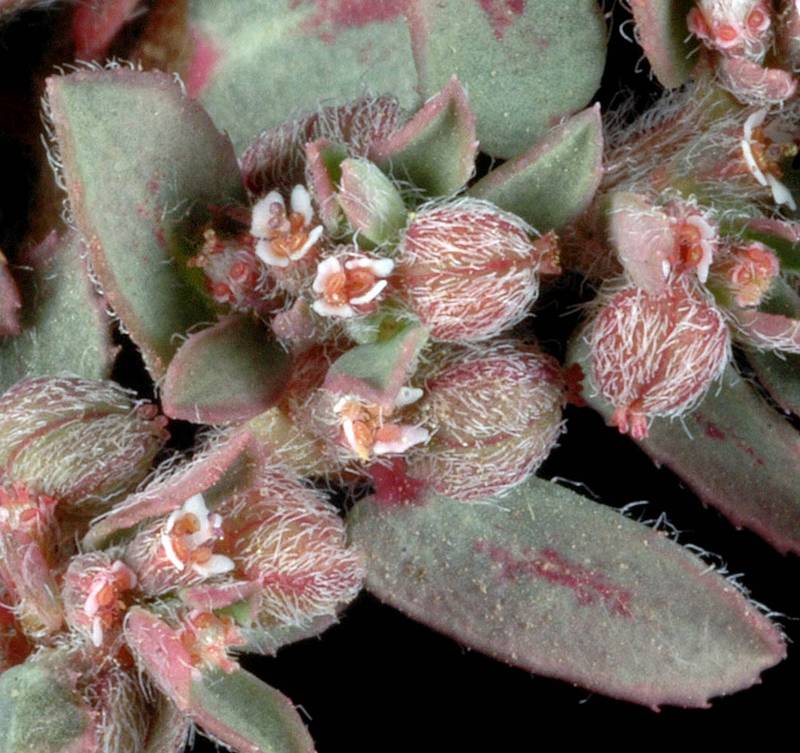Euphorbia maculata
Euphorbia cyparissias
sandmat, milk spurge, spotted spurge
cypress spurge
Leaves opposite, short-petiolate, oblong or oblong-lanceolate, 1-3 cm. long and 4-9 mm. wide, with long, soft hairs;
stipules triangular, 1 mm. long.
Leaves alternate, the lower ones linear, 1-3 cm. long and 1-3 mm. broad;
leaves of the axillary upper branches more numerous and narrower.
Inflorescence of cymes terminal on the branches, the flowers tiny, monoecious, borne in involucres; staminate flowers numerous, naked, each consisting of a single stamen; pistillate flower single and terminal in the involucre;
involucre obconic, 1.5 mm. long, bearing 4 glands separated by reniform appendages, white or pink, entire, 0.2-0.4 mm. long.
Inflorescence a many-rayed umbel, the floral bracts broadly ovate-cordate, 12-16 mm. long;
flowers tiny, monoecious, borne in involucres; staminate flowers numerous, naked, each consisting of a single stamen; pistillate flower single and terminal in the involucre;
involucres about 3 mm. long, bearing 4 reddish-green, horned glands.
Capsules 2 mm. long;
seeds golden-brown, 1.3 mm. long, flattened and shallowly pitted between the 3 or 4 rounded, longitudinal ridges.
Capsules finely warty, separating into three 1-seeded segments.
Euphorbia maculata
Euphorbia cyparissias
- Local floras:
BC,
CA,
OR,
WA
- Local Web sites:
CalFlora,
CalPhotos,
Flora NW,
PNW Herbaria
WildflowerSearch
iNaturalist (observations)
USDA Plants Database
- LBJ Wildflower Center
- SEINet
- Plants of the World Online
- Encyclopedia of Life
- Wikipedia
- Google Image Search
- Local floras:
BC,
OR,
WA
- Local Web sites:
Flora NW,
PNW Herbaria
WildflowerSearch
iNaturalist (observations)
USDA Plants Database
- LBJ Wildflower Center
- SEINet
- Plants of the World Online
- Encyclopedia of Life
- Wikipedia
- Google Image Search



